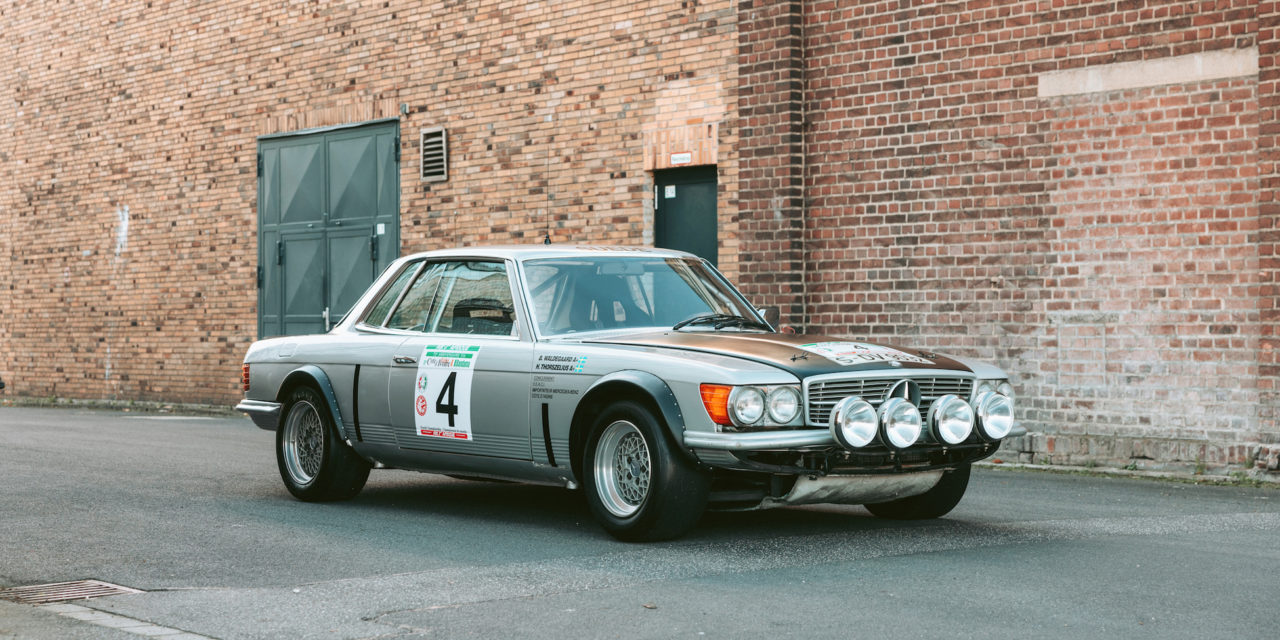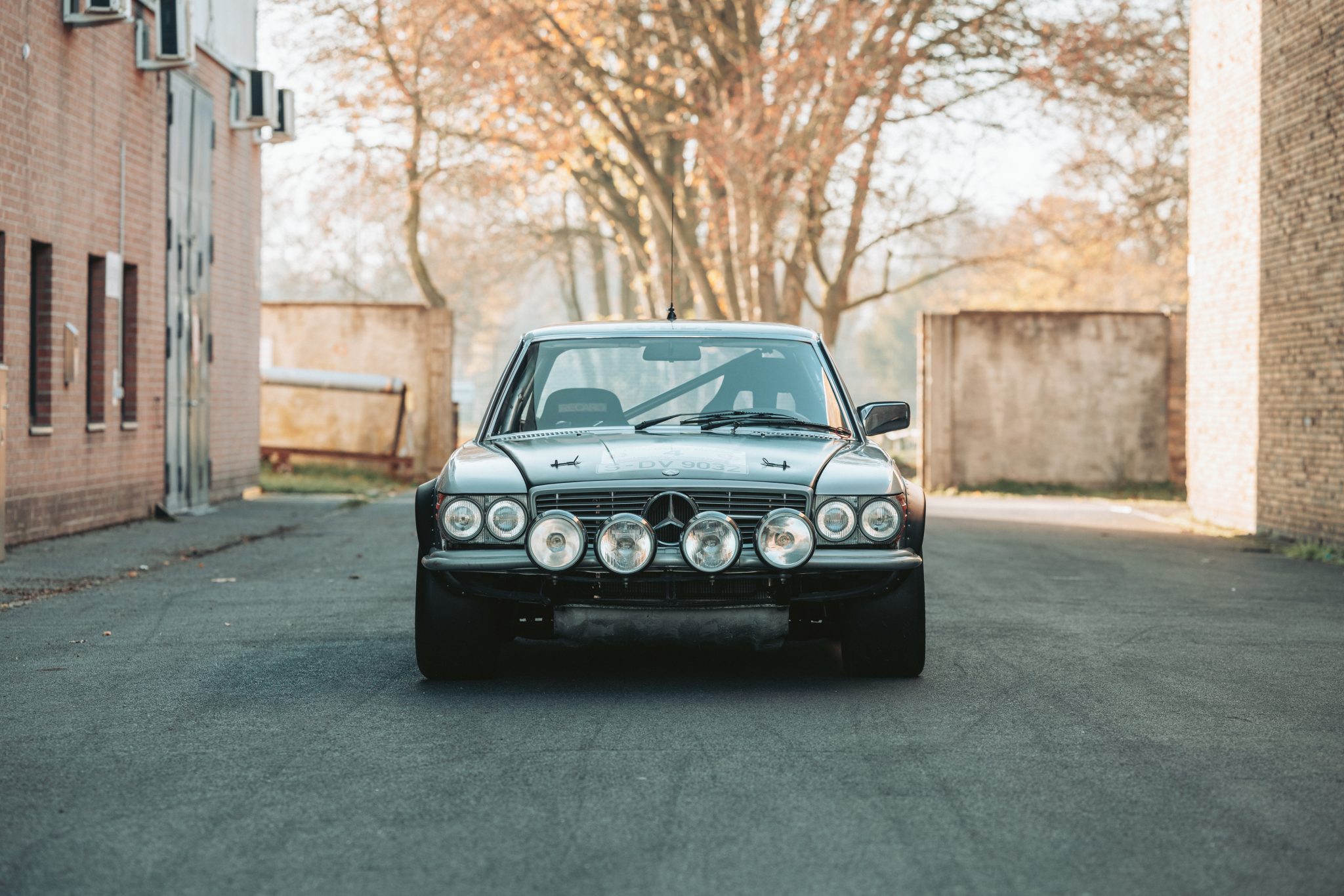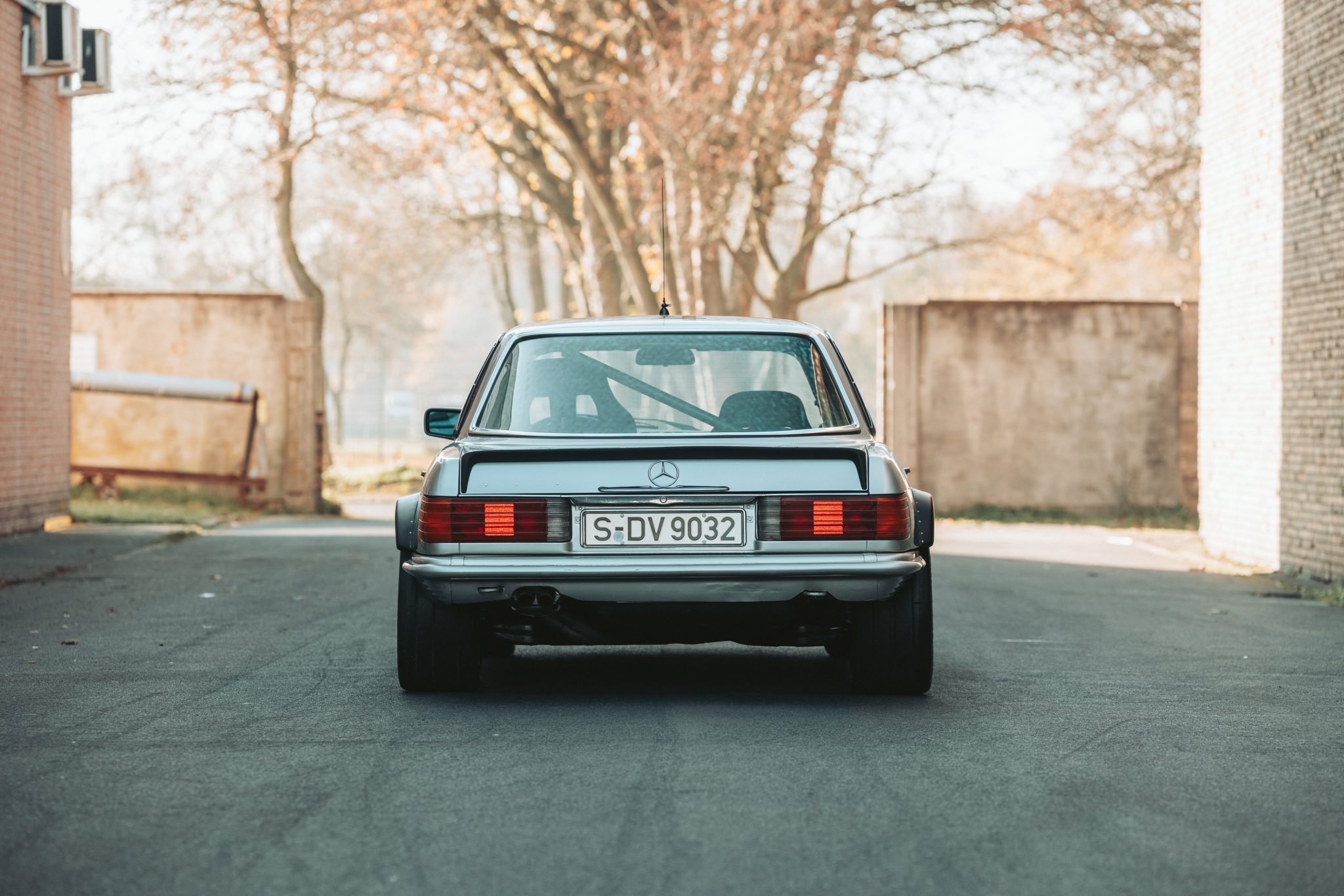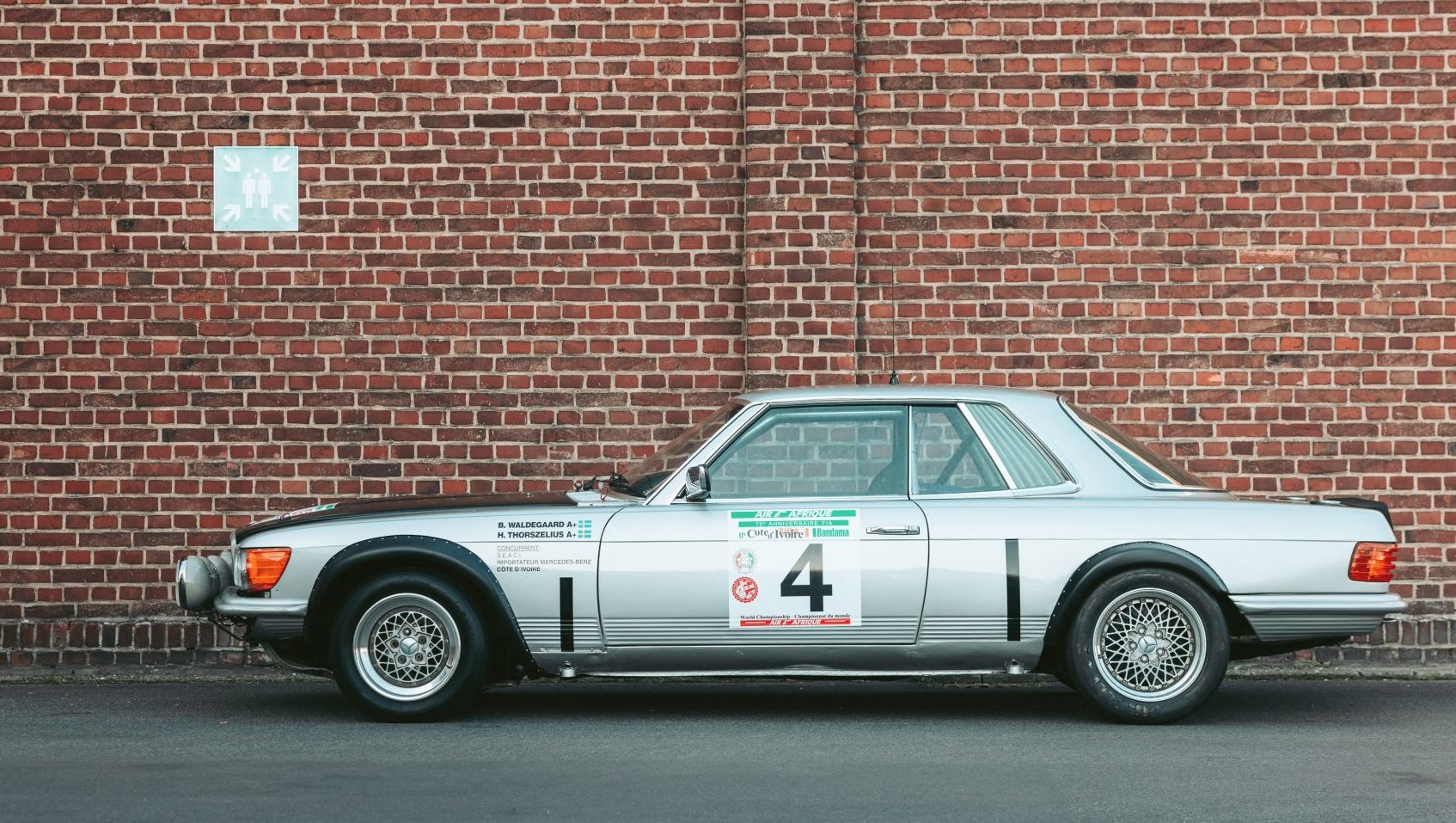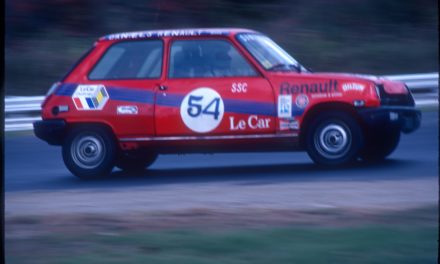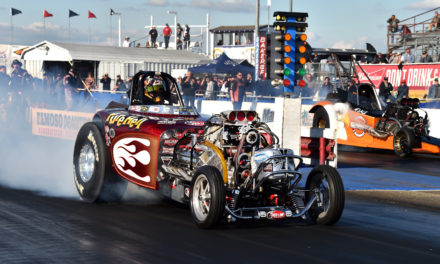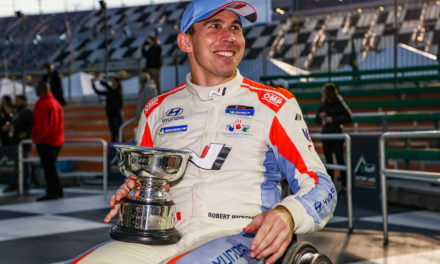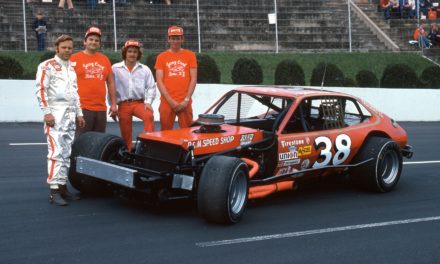Buoyed by its success on the 1977 London-Sydney Marathon, when a 280E driven by Andrew Cowan, Colin Malkin, and Mike Broad won the grueling 19,000-mile endurance rally, Mercedes-Benz turned to an unlikely car for its next challenge. Erich Waxenberger, the engineer who headed the factory team, had every reason to feel confident; four 280E saloons finished first, second, sixth, and eighth in Australia.
Unveiled at the 1971 Paris Motor Show, the Mercedes-Benz SLC with its coupe configuration was identical to the R107-generation SL roadster from the front end to the windscreen, but both longer and taller. The additional 14 inches of length allowed Mercedes-Benz to fit a pair of seats in the back, while the increased rigidity made the SLC more stable than the topless SL. The changes improved the platform’s credentials for motorsport, but the SLC was not the first car you’d turn to for racing on the world’s unpaved roads, especially when you consider its three-speed automatic transmission.
Waxenberger begged to differ. He sent four 450 SLC 5.0s and a pair of 280Es into battle on the 1978 Vuelta à la América del Sud rally. After nearly 18,000 miles of driving on some of South America’s most grueling roads, Cowan and Malkin were crowned winners again, this time in a 450 SLC. The other Mercedes-Benz works cars finished second, third, fourth (with Timo Mäkinen and Jean Todt onboard), sixth, and ninth, with a non-works 280E coming home in tenth position.
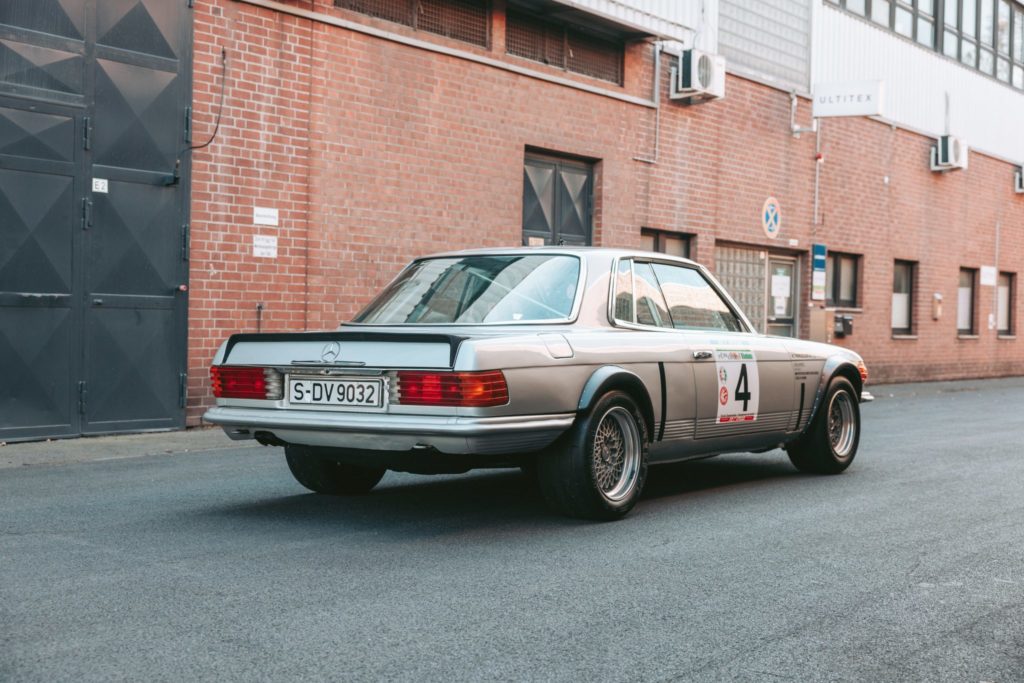
Further success followed on the 1979 Rallye Bandama Côte d’Ivoire, with a 450 SLC driven by Hannu Mikkola finishing top of the podium and Mercedes-Benz occupying the first four places. As Martin Buckley points out in his profile of the least likely rally car, the one-two-three-four “has to be set in the context of the unheard-of resources the Germans threw at the event: 500 spare tires and 35 support vehicles, including planes and even helicopters.”
Cowan spoke about the resources on the 1980 Rally of New Zealand, saying: “At one point we got stones between the rear wheels and the discs, and they just wiped the brake calipers off. With no brakes and an automatic transmission, that car was not easy to drive. We radioed up and Waxenberger told us to keep going. We got off the stage and drove slowly—when to our amazement, we saw this helicopter ahead of us, and beneath it hung a complete rear suspension— differential, shafts, brakes, wishbones and sub-frame. They landed and in 20 minutes we were off again with the car like new.”
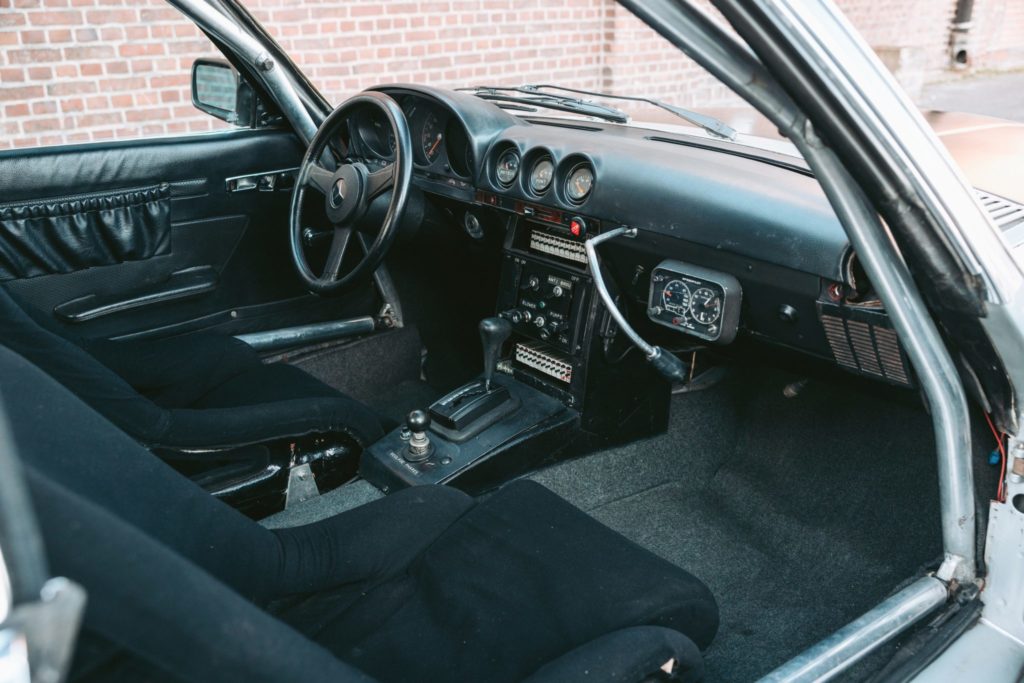
By then, the 450 SLC had evolved into the 500 SLC, with the output of the M117 5.0-liter V-8 increased from 237 to 324 hp and the fitment of a four-speed auto. Mercedes-Benz finished a creditable fourth out of 16 manufacturers in the championship, including an impressive one-two on the 1980 Rallye Bandama Côte d’Ivoire. There were plans to replace the SLC with a 500 SL, with Mercedes-Benz recruiting Walter Röhrl for the 1981 season, but this came to nothing.
Which leaves the 450/500 SLC to cement its reputation as one of the world’s best endurance rally cars. The caveats are the considerable backing from Mercedes-Benz and the car’s less-than-stellar performances on shorter rallies, but the SLC’s robustness and ability to withstand significant punishment should not be underestimated.
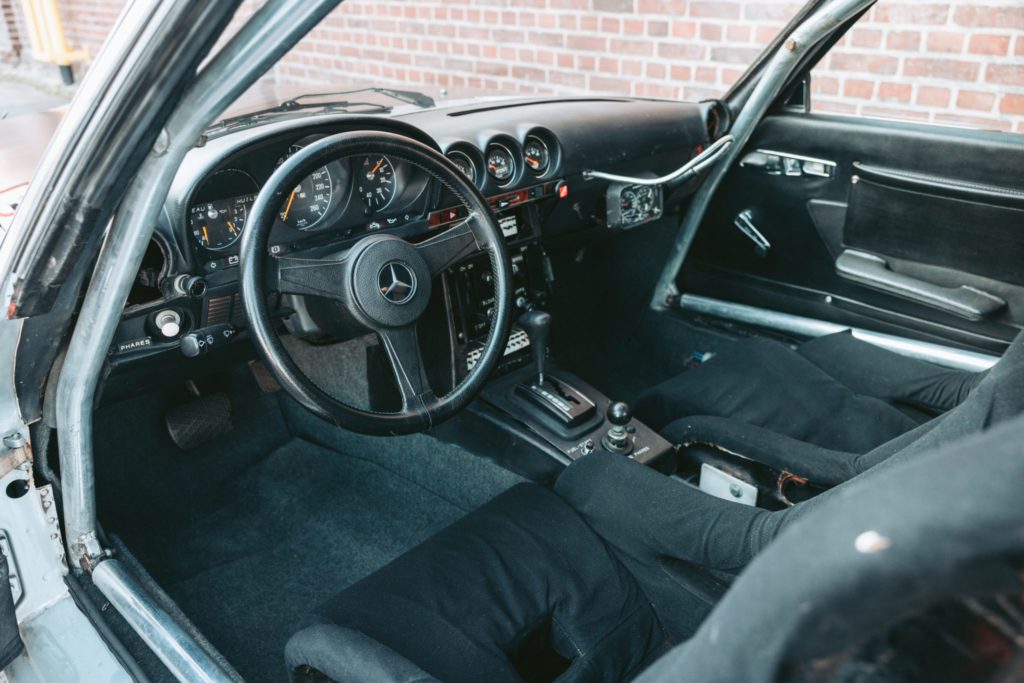
Just seven of the 19 SLCs built for rallying were badged 450 SLC 5.0, so opportunities to experience this unlikely slice of Mercedes-Benz motorsport history don’t come along that often. This probably explains why RM Sotheby’s reckons the 1979 “Rallyewagen” you see here could fetch over $1,000,000 when it goes under the hammer in February.
Chassis number 846 was completed in September 1979 and fitted with a special-development engine and supplementary cooling systems for the oil and coolant, along with a radiator that served as a grille to protect the power-steering system from debris. Making its debut in 1979, it finished second in the Ivory Coast before securing a third place on the 1980 Marlboro Safari Rally in Kenya.
- Photos: RM Sotheby’s/Keno Zache
Having served as a training car in Argentina, it was sold to a Belgian enthusiast who kept the car until 1984. It changed hands a couple of times before arriving with the consigning owner in 1990, returning to its original Rallye Bandama livery. With a pre-auction estimate of €800,000 to €1,100,000 ($864,800 to $1,189,210), you’ll have to dig deep if you fancy owning the first V-8-engined, automatic-transmission car to win a World Rally Championship event.

